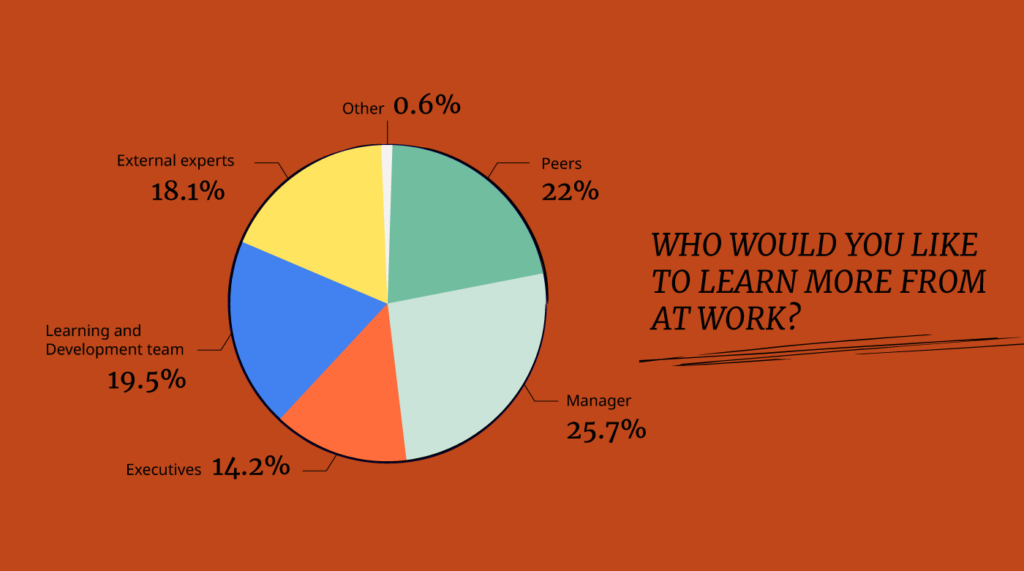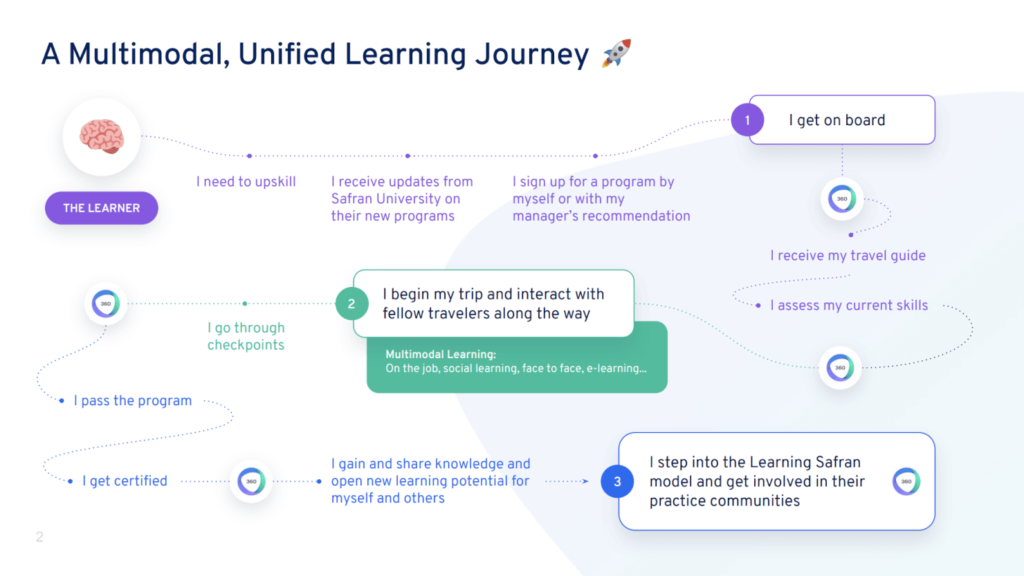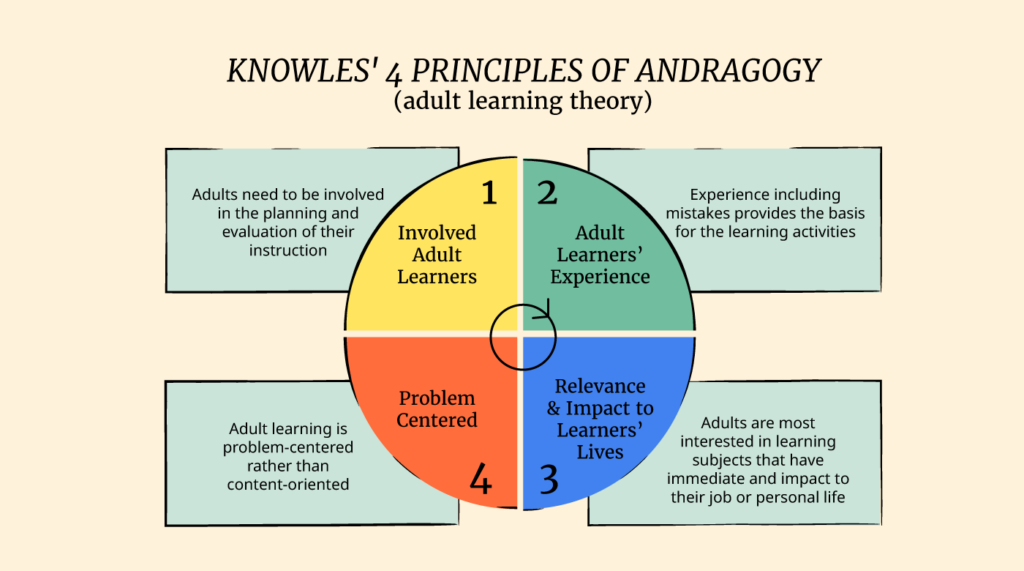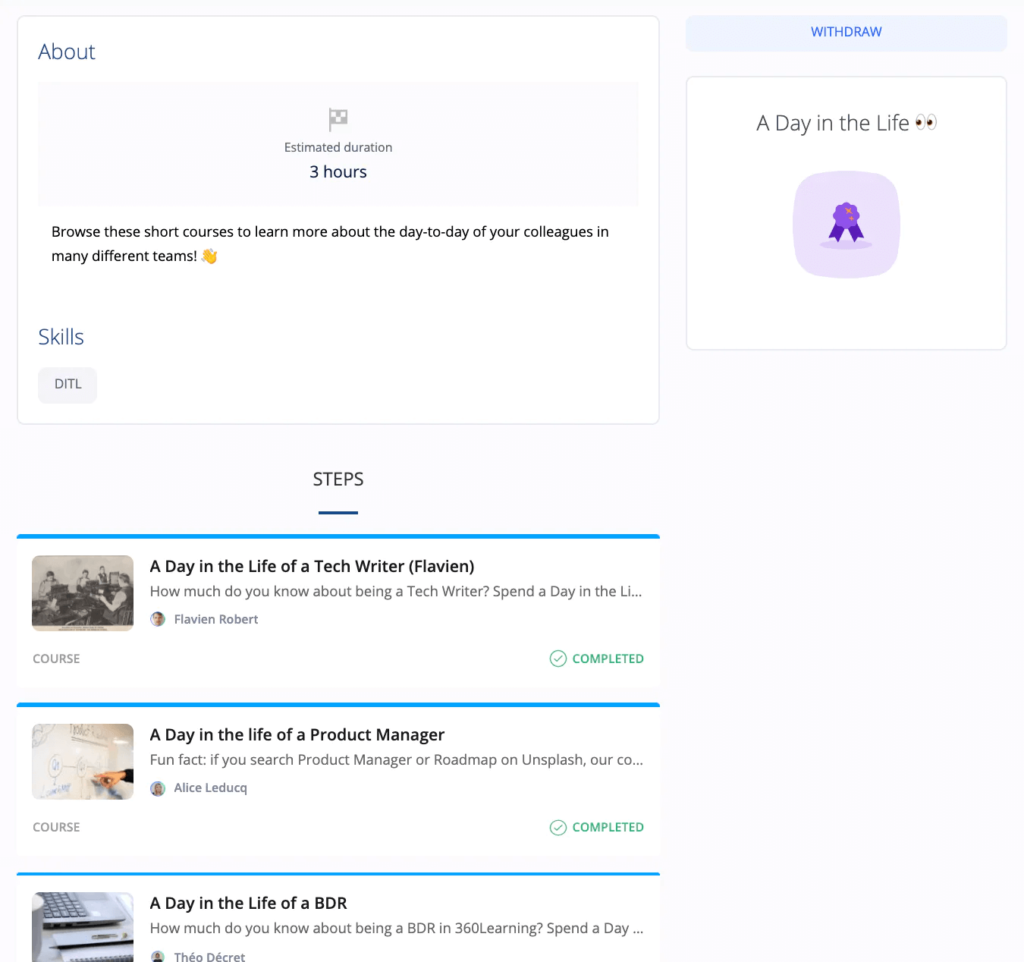With workplace demands shifting, it benefits employers, managers, and Learning and Development teams alike to take a closer look at what employees need to thrive at work.
Last July we sent a survey to 600 American workers to better understand what people really wanted from their workplace learning programs.
We uncovered a lot. Perhaps one of the more important conclusions came back to who employees want to learn from—and it isn’t executives or external experts. Most people (26%) said they wanted to learn more from their managers, followed closely by peers (22%).
A further 57% of employees would leave a job if they weren’t getting enough professional development opportunities.

Employees are looking for a more bottom-up, collaborative, and peer-driven way of learning. Now, it’s up to L&D teams to deliver on these expectations. Here are a few actionable ways companies can nurture peer-to-peer learning within their organization.
1. Utilize Institutional Knowledge Through Collaborative Learning
Here’s a familiar tune for most L&D teams: a learning need is identified—let’s say, a safety training program for employees at a shipping company. Many L&D leaders would immediately turn to off-the-shelf content, or else work with an instructional designer on a course that could take months—and lots of money—to create.
A learning manager then publishes the content on the company’s LMS (learning management system), only to discover a few weeks later that the courses are either already outdated or too generic to be effective.
Since these courses are laborious to update, the L&D team is now out a significant amount of time and money. Perhaps worse, employees are also out of a much-needed training program.
This is why many companies, including our client Safran—a high-technology group with over 79,000 employees—are choosing to approach their training from a peer-to-peer angle.
Many of the group’s personnel were retiring and they needed a way to quickly train their young replacements. They also knew their target markets (aviation, defense, and space), are evolving rapidly—their teams must constantly hone their skills to keep pace with this fast-changing landscape.
Finally, Safran is in full digital transformation mode, meaning their entire workforce needs to be retrained on these new processes.

Opting for a peer-to-peer approach meant that learners could comment and react to courses collectively, ask questions, and start dialogues as needed.
They kept content interactive with their internal video creation studio, meaning they could add rich media into their programs. Both internal subject-matter experts and L&D team members used the built-in authoring tool to create courses, saving time and ensuring material was contextual and up to date.
To keep track of learner progress, personalized dashboards were built in 360Learning that helped to organize monthly meetings where KPIs would be set and assessed.
By decentralizing content creation, Safran University (the group’s internal L&D hub) was able to refocus their training on strategic issues for the group and transform Safran into a Learning Organization through continuous knowledge sharing.
Related Read: 10 Best Meeting Management Software For Remote Teams
2. Run Bottom-Up Training Needs Analysis
Hand-in-hand with a peer-driven approach to course creation is a bottom-up approach to training needs analysis. Organizations that trust their workforce to declare their own learning needs are far more likely to provide training with a real benefit.
Unfortunately, most companies run a top-down training needs analysis. This means upper management or L&D teams establish learning goals, knowledge gaps, and course creation schedules. Employees might be polled during this process, but ultimately, the decisions rest with management.
This is a shame since our survey also revealed that 70% of employees prefer to declare their own learning needs. This preference also aligns with what we know about how adults like to learn, as researched by Malcolm Knowles and expressed in his principles of andragogy (adult learning theory): Adults need to be involved in the planning and evaluation of their instruction.
L&D leaders are much more likely to cultivate motivation and a culture of learning among their colleagues when they meaningfully involve them in that process.

3. Reward Knowledge Sharing (to Create a Learning Culture)
One thing that is sure to hinder your peer-to-peer learning process is a culture of withholding information. Take a look at your company culture—is it one that rewards “hoarding” knowledge? Do employees feel they need to jealously guard information to get a promotion or praise? If so, you’re never going to facilitate a culture of peer-to-peer learning.
This was exactly the problem that Steve Kerr faced when he pioneered the Chief Learning Officer role at General Electric (GE) in the 90s. He knew that “moving information across the business” was central to his job, but he also realized employees treated knowledge like a currency that they preferred to keep to themselves.
Kerr had to change the culture at GE to one in which sharing information was praised, and in which hoarding it was reprimanded.
If you think you might be facing similar roadblocks, consider using:
- Gamification: Not all competition is counterproductive when it comes to learning. Think about implementing gamification through leaderboards, challenges, or achievement prizes for those who teach and participate in peer learning.
- “Recognitions”: Do you have some kind of employee recognition program? Incorporate praise for learners and subject-matter experts that share their knowledge.
- Modeling by managers: Incorporate this mindset into manager training and ask managers to model this “good” behavior.
4. Put in Place a Job Shadowing Program
Peer-to-peer learning is particularly useful in creating cross-team empathy, and in helping employees decide on their next career step. This is where day in life training, or job shadowing, can be a good option.
In day-in-the-life training, employees are given an inside look at their colleagues’ day-to-day. The idea is to build understanding and empathy across different business units, in the hope that this will foster better collaboration.
For instance, if Jonathan from Marketing spends an hour really digging into how Yasemin from Accounting processes invoices, he might be inclined to follow guidelines and get his in on time. Or perhaps, when peers from Customer Success and Product get together, they realize they have some compatible ideas for how to minimize client complaints.

Here are some of our tips for creating day in the life training:
- Keep courses short (10 minutes)
- Opt for asynchronous courses for an overview, and in-person live sessions for specific cases
- Include an intro, “rhythms of a typical day”, what downtime looks like, and interactive (Q&A) sections
But what about employees looking to make a career change? Shadowing can inspire them to stick around and explore opportunities right where they are with job shadowing, which is helpful for those looking to make a career change.
We’ve run both types of programs at 360Learning, and found learner engagement was encouragingly high; during our in-house day in the life campaign,196 unique users interacted with learning programs on our platform. That’s over 85% of our workforce. During that period, our employee Learning Score also hit an all-time high of 8.6.
5. Give Effective Manager Training
If we circle back to the top of this article, we’re reminded that employees want to learn mainly from their managers. For that to work, managers need to understand that knowledge transfer—maybe even mentoring or coaching—is a priority at your organization. You can encourage this behavior by:
- Incorporating these ideas into manager training—and make sure you have comprehensive manager training in the first place!
- Including learning goals in performance reviews so that employees can measure their progress. This could be things like mastering a new tool, improving soft skills, or passing a certification.
- Encouraging managers to delegate when it makes sense—these opportunities can turn into excellent learning experiences for direct reports. Be sure they follow up during one-to-one meetings and that the employee is supported throughout.
Final Thoughts
Across companies, a bottom-up approach to learning and company culture at large is taking root. Employees don’t want to sit through out-of-context courses that they don’t feel they need, on material that won't help them do their jobs better or advance in their career. By giving learners a more active role in their learning journey, you’ll create a more motivated, more knowledgeable, and more productive workforce.
Related Content:


